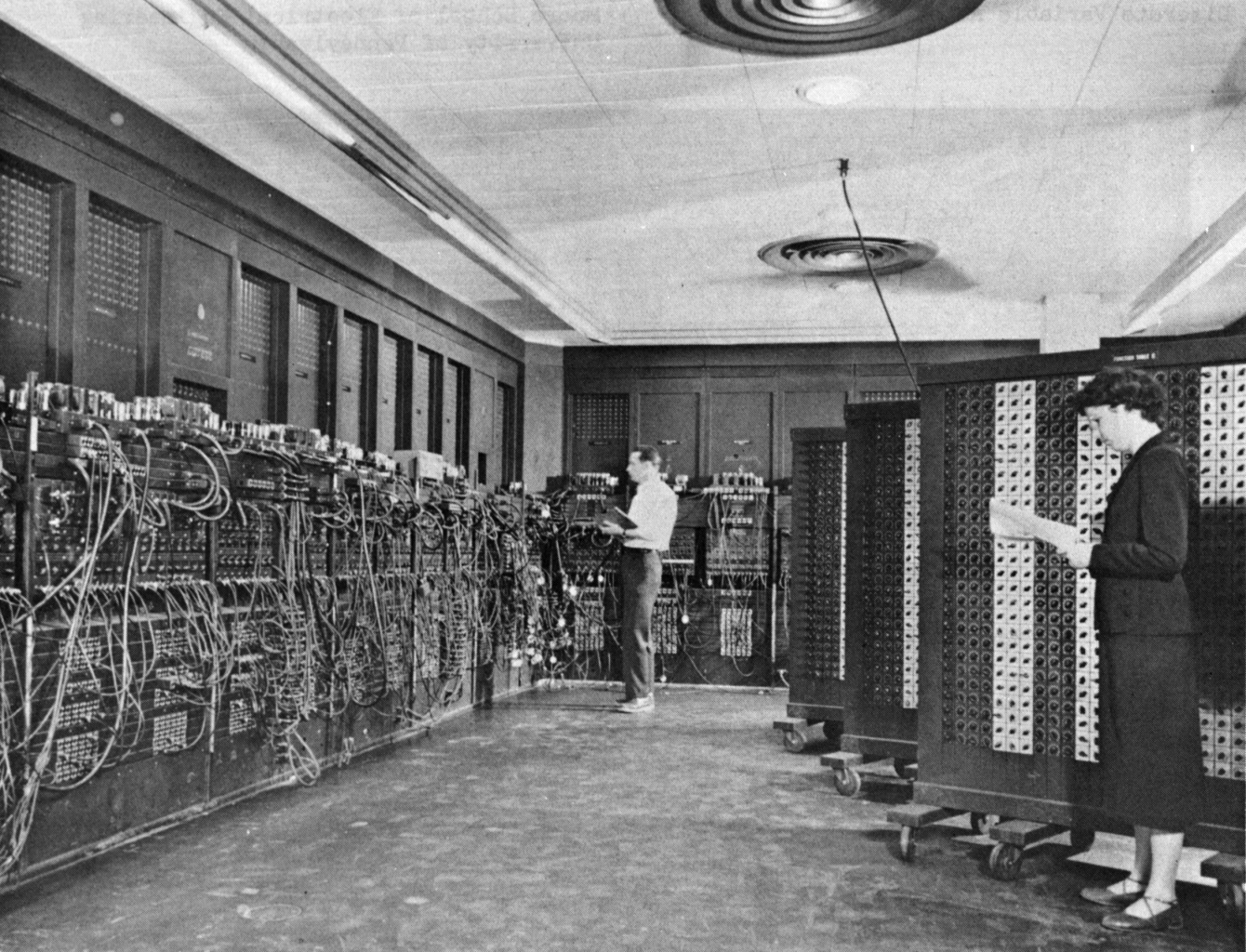|
Serial Decimal
In computers, a serial decimal numeric representation is one in which ten bits are reserved for each digit, with a different bit turned on depending on which of the ten possible digits is intended. ENIAC and CALDIC used this representation. See also *Bit-serial architecture In computer architecture, bit-serial architectures send data one bit at a time, along a single wire, in contrast to Parallel transmission, bit-parallel word (computer architecture), word architectures, in which data values are sent all bits or a ... * Digit-serial architecture * 1-of-10 code * One-hot code References Computer arithmetic {{compu-storage-stub ... [...More Info...] [...Related Items...] OR: [Wikipedia] [Google] [Baidu] |
ENIAC
ENIAC (; Electronic Numerical Integrator and Computer) was the first Computer programming, programmable, Electronics, electronic, general-purpose digital computer, completed in 1945. Other computers had some of these features, but ENIAC was the first to have them all. It was Turing-complete and able to solve "a large class of numerical problems" through reprogramming. ENIAC was designed by John Mauchly and J. Presper Eckert to calculate artillery external ballistics, firing tables for the United States Army's Ballistic Research Laboratory (which later became a part of the United States Army Research Laboratory, Army Research Laboratory). However, its first program was a study of the feasibility of the thermonuclear weapon. ENIAC was completed in 1945 and first put to work for practical purposes on December 10, 1945.* ENIAC was formally dedicated at the University of Pennsylvania on February 15, 1946, having cost $487,000 (), and called a "Giant Brain" by the press. It had ... [...More Info...] [...Related Items...] OR: [Wikipedia] [Google] [Baidu] |
CALDIC
CALDIC (the California Digital Computer) is an electronic digital computer built with the assistance of the Office of Naval Research at the University of California, Berkeley between 1951 and 1955 to assist and enhance research being conducted at the university with a platform for high-speed computing. CALDIC was designed to be constructed at a low cost and simple to operate, by standards of the time, note that in a pre-1965 context there is no interactive user IO or human readable output in printed characters in most computers. There is no human readable user interface. It was a serial decimal machine with an , 10,000-word magnetic drum memory. (As CALDIC's decimal words were 10 digits each, the magnetic memory could store about 400,000 bits.) It contained 1,300 vacuum tubes, 1,000 crystal diodes, 100 magnetic elements (for the recording heads), and 12 relays (in the power supply). It weighed about . It was capable of speeds of 50 iterations per second. CALDIC was a stored prog ... [...More Info...] [...Related Items...] OR: [Wikipedia] [Google] [Baidu] |
Bit-serial Architecture
In computer architecture, bit-serial architectures send data one bit at a time, along a single wire, in contrast to Parallel transmission, bit-parallel word (computer architecture), word architectures, in which data values are sent all bits or a word at once along a group of wires. All digital computers built before 1951, and most of the early massively parallel (computing), massive parallel processing machines used a bit-serial architecture—they were serial computers. Bit-serial architectures were developed for digital signal processing in the 1960s through 1980s, including efficient structures for bit-serial multiplication and accumulation. The HP Nut processor used in many Hewlett-Packard calculators operated bit-serially. Assuming N is an arbitrary integer number, N serial processors will often take less FPGA area and have a higher total performance than a single N-bit parallel processor. See also * Serial computer * 1-bit computing * Bit banging * Bit slicing * BKM a ... [...More Info...] [...Related Items...] OR: [Wikipedia] [Google] [Baidu] |
Digit-serial Architecture
A serial computer is a computer typified by bit-serial architecture i.e., internally operating on one bit or digit for each clock cycle. Machines with serial main storage devices such as acoustic or magnetostrictive delay lines and rotating magnetic devices were usually serial computers. Serial computers require much less hardware than their bit-parallel counterparts which exploit bit-level parallelism to do more computation per clock cycle. There are modern variants of the serial computer available as a soft microprocessor which can serve niche purposes where the size of the CPU is the main constraint. The first computer that was not serial and used a parallel bus was the Whirlwind in 1951. A serial computer is not necessarily the same as a computer with a 1-bit architecture, which is a subset of the serial computer class. 1-bit computer instructions operate on data consisting of single bits, whereas a serial computer can operate on ''N''-bit data widths, but does so a si ... [...More Info...] [...Related Items...] OR: [Wikipedia] [Google] [Baidu] |
1-of-10 Code
In digital circuits and machine learning, a one-hot is a group of bits among which the legal combinations of values are only those with a single high (1) bit and all the others low (0). A similar implementation in which all bits are '1' except one '0' is sometimes called one-cold. In statistics, dummy variables represent a similar technique for representing categorical data. Applications Digital circuitry One-hot encoding is often used for indicating the state of a state machine. When using binary, a decoder is needed to determine the state. A one-hot state machine, however, does not need a decoder as the state machine is in the ''n''th state if, and only if, the ''n''th bit is high. A ring counter with 15 sequentially ordered states is an example of a state machine. A 'one-hot' implementation would have 15 flip-flops chained in series with the Q output of each flip-flop connected to the D input of the next and the D input of the first flip-flop connected to the Q output of t ... [...More Info...] [...Related Items...] OR: [Wikipedia] [Google] [Baidu] |
